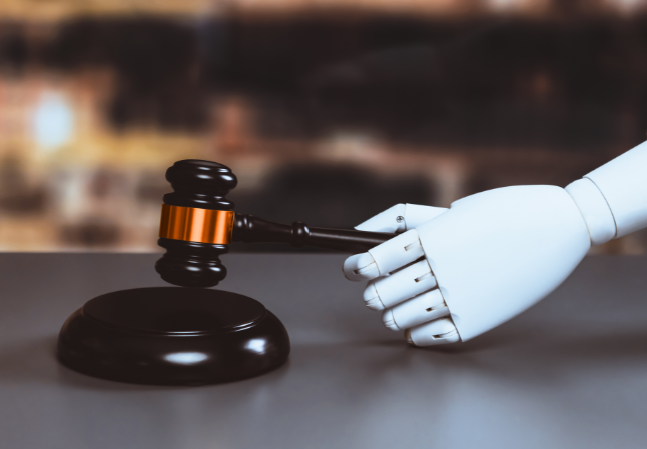Welcome! Save 30% on all CLE, CPE, and Professional Skills webinars, plus 15% off any annual pass with code HOLIDAY25
About the Course
Introduction
This CLE course will assist patent practitioners in drafting high quality patent applications for machine learning inventions. The panel will discuss different claim styles and framings that may be appropriate for different machine learning inventions, how to anticipate and minimize the risks of Sect. 101 or 112 rejections, and best practices for success before the European Patent Office (EPO).
Description
Machine learning is a cutting-edge field of technology that is being increasingly applied in many different contexts, from pure information technologies to practical applications such as autonomous robotics. However, inventions in machine learning pose challenges for patent practitioners drafting patent applications.
As one example, current machine learning workflows include multiple components such as data acquisition, data preparation, model selection or design, model learning or training, and deployment of the trained model within a larger computing context or application. Counsel should examine the invention to understand how the invention's novelty relates to each of these components and then draft claims that have a style and framing that optimally captures the invention based on its position in the workflow.
Further, the scope of patent-eligible machine learning technology is an evolving area of law in the United States and Europe. Understanding the contours of subject matter eligibility in the U.S. and Europe enables improved filing decisions and drafting with eligibility requirements in mind, leading to a greater likelihood of success.
Counsel may also face challenges when seeking to comply with the disclosure requirements such as those outlined in Section 112. Considering and addressing these challenges when drafting patent applications for machine learning inventions can benefit applicants by producing valid and enforceable patents.
This webinar will assist counsel in understanding both the USPTO's and the EPO's approach to examining machine learning inventions. Counsel that is well versed in both the U.S. and EU approaches can successfully navigate challenges in obtaining patent protection in multiple jurisdictions.
Listen as our authoritative panel of patent attorneys examines different claim styles and framings that may be appropriate for different machine learning inventions, how to anticipate and minimize the risks of Sect. 101 or 112 rejections, and best practices for success before the EPO.
Presented By

Mr. Arrowsmith is often ranked as one of the leading patent attorneys in the UK. His technical focus is in physics with specialisms in optics and software. He works with in-house departments for a number of U.S. companies to support and develop their European IP portfolio. Mr. Arrowsmith also works with large multinationals based in Europe working on some of their latest innovations, in the patent drafting process as well as overseas prosecution, and oppositions. HE works across a variety of industrial sectors, but has particular expertise in machine learning, augmented reality and virtual reality devices, mobile phones and telecommunication, GPS and navigation systems, quantum computing, and medical devices.

Dr. Borella provides legal and technological advice in support of validity, infringement, patentability analyses, and litigation matters. His expertise includes networking, internet telephony, wireless communication technologies, telecommunications, financial transactions, cloud computing, routing, TCP/IP, artificial intelligence and machine learning, computer graphics and imaging, voice and facial recognition, robotics, and mobile applications. Dr. Borella has drafted or been involved in the prosecution of hundreds of patents in the U.S., as well as in other jurisdictions. He has experience in numerous phases of patent litigation, including invalidity analysis, discovery, motion practice, and claim construction. His practice also includes patentability, validity, and infringement analyses, as well as client counseling with respect to the procurement of all types of intellectual property rights. Dr. Borella has written extensively on the patent-eligibility of computer-implemented inventions and has been a featured presenter for several seminars on the topic as well. He is a former adjunct professor at Northwestern University, and has lectured on patent law at the Chicago-Kent College of Law.
-
This 90-minute webinar is eligible in most states for 1.5 CLE credits.
-
Live Online
On Demand
Date + Time
- event
Thursday, September 7, 2023
- schedule
1:00 p.m. ET./10:00 a.m. PT
- Understanding the components of a machine learning invention
- Claim strategies for machine learning inventions, style, and framing
- The current state of subject matter eligibility for machine learning in the U.S. and Europe
- Disclosure requirements in the U.S. and Europe
- Drafting techniques for satisfying patent eligibility and disclosure requirements
The panel will review these and other relevant issues:
- What is the appropriate way to claim machine learning inventions?
- How can patent counsel meet the requirements under Sections 101 and 112 in machine learning patent applications?
- How does the EPO treat patent applications for machine learning technologies differently than the USPTO?
- What steps should patent counsel take to satisfy patent eligibility and disclosure requirements?
Unlimited access to premium CLE courses:
- Annual access
- Available live and on-demand
- Best for attorneys and legal professionals
Unlimited access to premium CPE courses.:
- Annual access
- Available live and on-demand
- Best for CPAs and tax professionals
Unlimited access to premium CLE, CPE, Professional Skills and Practice-Ready courses.:
- Annual access
- Available live and on-demand
- Best for legal, accounting, and tax professionals
Unlimited access to Professional Skills and Practice-Ready courses:
- Annual access
- Available on-demand
- Best for new attorneys




